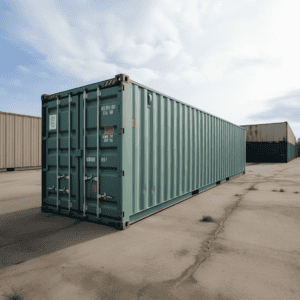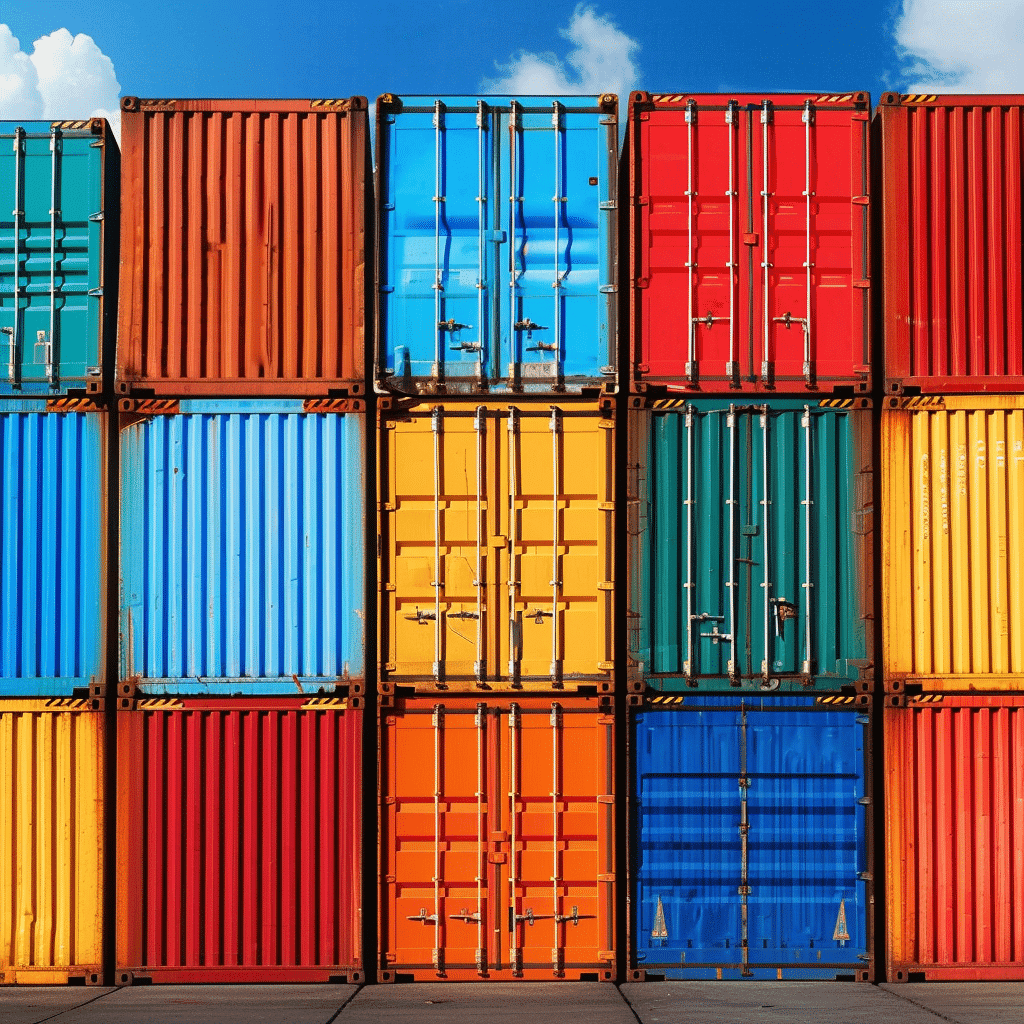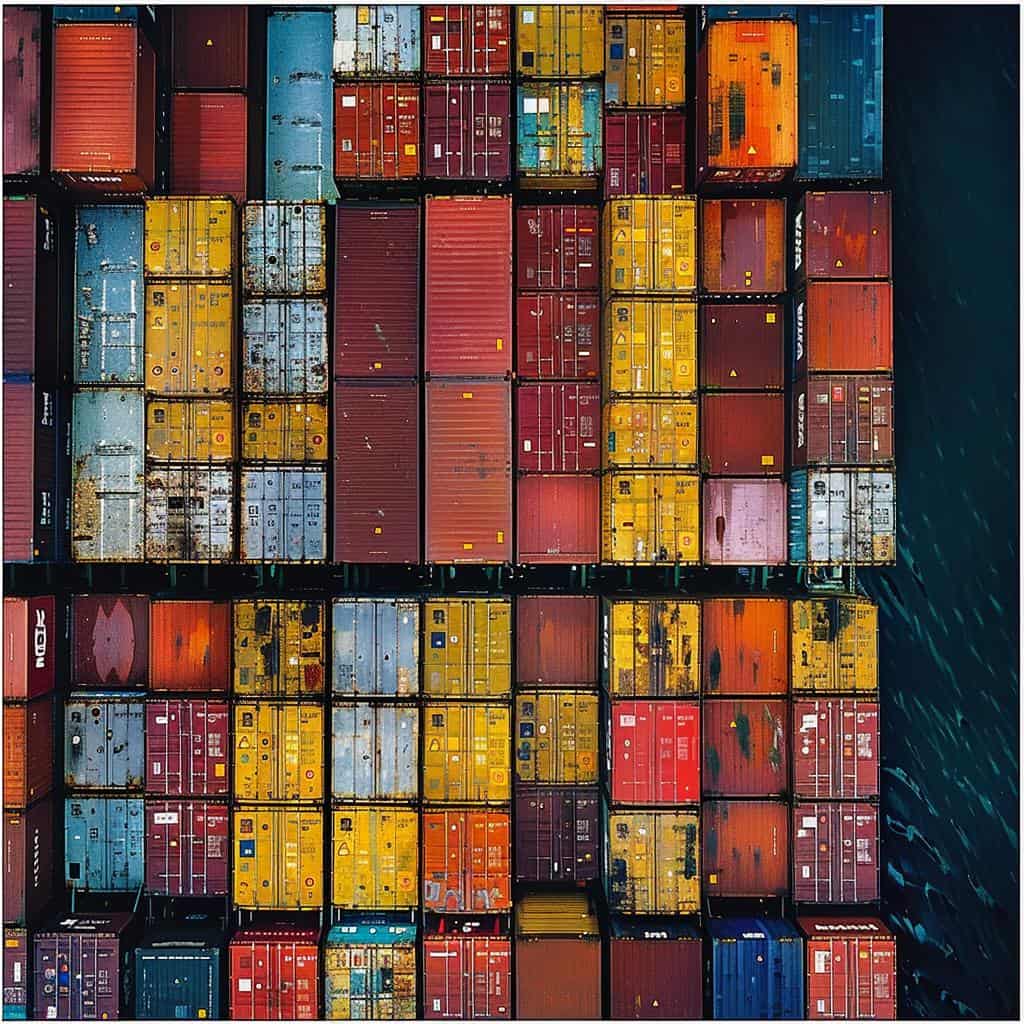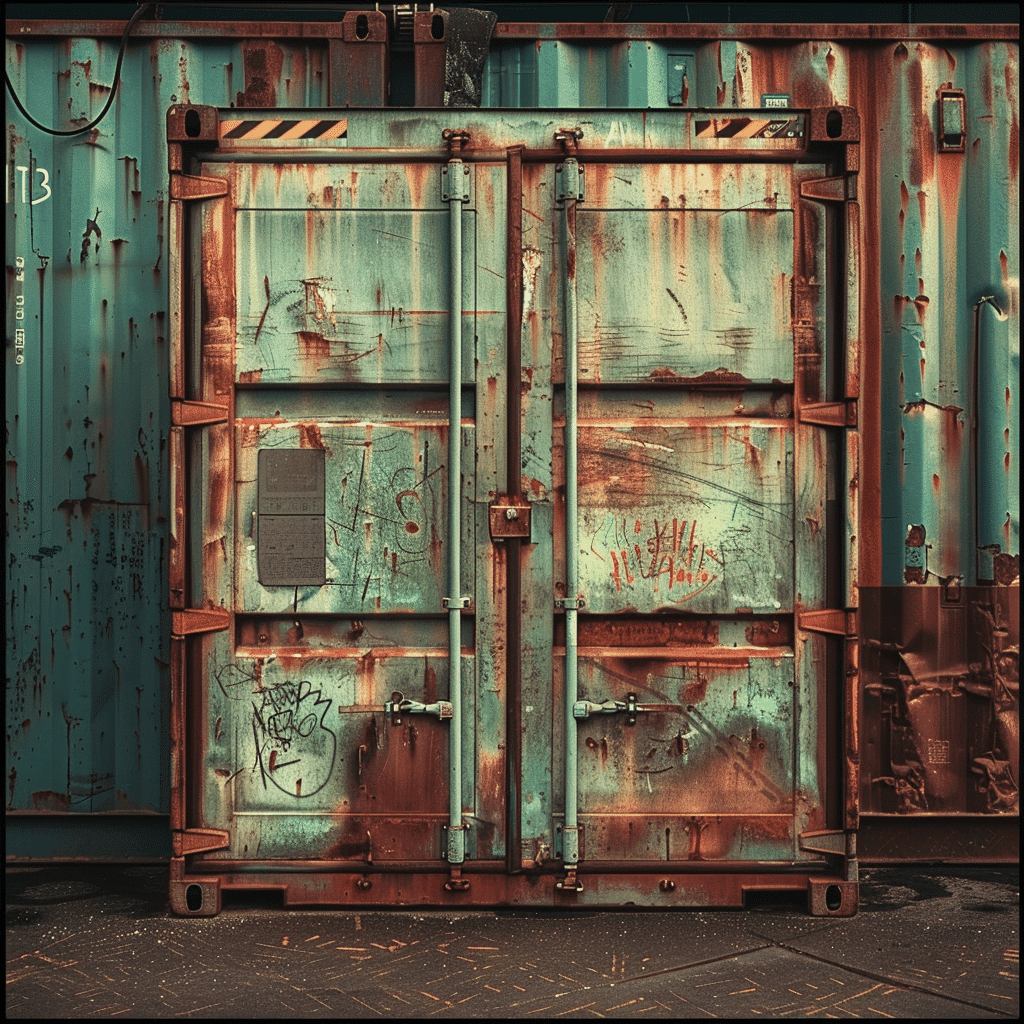Are you curious about the dimensions and specifications of 40-foot shipping containers? Look no further!
In this article, we will provide you with all the essential information you need. Whether you’re considering renting or purchasing a container, understanding its dimensions and specifications is crucial.
So, let’s dive in and explore the world of 40-foot shipping containers together.
Dimensions
Take a look at the dimensions of 40-foot shipping containers. When it comes to standard shipping containers and container dimensions, the standard size for a 40-foot container is 40 feet in length, 8 feet in width, and 8.5 feet in height.
These exterior dimensions provide ample space for transporting goods and materials. However, it’s important to note that the interior dimensions may vary slightly due to the thickness of the container walls.
The interior dimensions of a 40-foot shipping container typically measure around 39.4 feet in length, 7.8 feet in width, and 7.9 feet in height. These dimensions are crucial to consider when planning the storage or transportation of your goods for shipping overseas, as they determine the capacity and compatibility of the container.

Door Opening Dimensions
You can continue exploring the specifications of a standard 40ft container by examining its door opening dimensions.
The door opening dimensions of a shipping container are crucial for determining the ease of loading and unloading cargo.
The standard container typically has double doors at one end, allowing for convenient access.
The dimensions of the door opening are typically around 7.8 feet (2.34 meters) in height and 7.6 feet (2.29 meters) in width.
These dimensions provide ample space for most types of cargo and ensure efficient loading and unloading processes.
It’s important to consider the door opening dimensions when planning the transportation and storage of your goods to ensure that they can be easily accommodated within the right container itself.
Uses
One common use for a shipping container is for storing and transporting goods. With the foot of shipping container dimensions ranging from 20 to 45 feet in length, these containers offer their customers ample storage space for various items.
Shipping containers are designed to withstand harsh weather conditions and are made from durable materials, making them suitable for long-term storage and transportation. The different shipping container sizes available allow for flexibility in accommodating different types of goods. Whether you need more space to store household items, construction materials, or even vehicles, a foot shipping container can provide the necessary space and security.
Additionally, the versatility of shipping containers makes them ideal for repurposing into other uses such as pop-up shops, offices, or even homes. So, whether you’re a business owner or an individual in need of extra storage, a foot shipping container can be a practical and cost-effective solution.
Commercial Storage
Commercial storage is a popular use for 40-foot shipping containers, providing ample space for storing goods, equipment, or furniture. These storage containers offer a convenient and cost-effective solution for businesses in need of additional space.
The standard dimensions of a 40-foot shipping container are 40 feet in length, 8 feet in width, and 8.5 feet in height. This generous size allows for the storage of a wide range of items, as containers vary from small boxes to large furniture pieces. Additionally, these containers are built to withstand the rigors of transportation and are weatherproof, ensuring the safety and security of your stored items.
When considering commercial storage options, the specifications of 40-foot shipping containers make them an ideal choice for businesses of all sizes.
Conversion Into Living Spaces or Offices
If you need additional living or office space, consider converting a 40-foot shipping container. These containers have specific dimensions and specifications that make them suitable for such conversions.
A standard 40-foot shipping container is approximately 40 feet long, 8 feet wide, and 8 feet 6 inches tall. They’re made of durable steel and designed to withstand harsh conditions during transportation.
When converting them into living spaces or offices, you can modify the interior layout to meet your needs. Install insulation, windows, doors, and electrical systems for comfort and functionality. Add partitions to create separate rooms or office cubicles.
With some creativity and planning, you can transform a 40-foot shipping container into a comfortable and functional living or working space.
Additional Features
To enhance the functionality of a 40-foot shipping container, certain features can be incorporated.
One option is to choose a high cube shipping container, which offers an additional foot of height compared to standard containers. This extra space can be valuable when storing or shipping taller items.
Another feature to consider is the cargo-worthy certification, which ensures that the fit inside the container meets international shipping standards. This certification is important if you plan to transport goods overseas.
Additionally, you can customize your container with features like windows, doors, and vents, depending on your specific needs. These customizations can make the container more versatile and suitable for various applications.
Lastly, when considering features, it’s essential to take into account container prices to ensure that they align with your budget.
Highlighting the Unique Characteristics and Build of 40ft Containers
When considering a 40-foot shipping container, you’ll notice its sturdy construction and spacious interior. These ISO containers have unique characteristics that make them ideal for various shipping and storage purposes.
The 40 foot container dimensions typically measure 40 feet in length, 8 feet in width, and 8.5 feet in height. However, there are also high cube containers available, which have an additional foot in height, providing even greater storage capacity.
The container tare weight, or the gross weight, of the empty container, is around 8,000 pounds. This ensures that the container is strong enough to withstand the rigors of transportation.
With their robust build and ample space, 40-foot containers are a popular choice for shipping and storing goods worldwide.
Material used (e.g., Cor-ten steel)
The material used in 40-foot shipping containers, such as Cor-ten steel, is known for its durability and strength. Cor-ten steel is a type of high-strength, low-alloy steel that contains a unique combination of chemical elements. This composition gives it exceptional resistance to corrosion and weathering, making it ideal for long-term outdoor use.
When it comes to foot shipping container type and dimensions, used shipping containers can vary in size and design. However, regardless of their dimensions, most shipping containers are constructed using Cor-ten steel. This material ensures that the containers can withstand the harsh conditions of transportation and storage, including exposure to saltwater, extreme temperatures, and heavy loads.
Whether for transporting goods across the ocean or as storage units, Cor-ten steel ensures that 40-foot shipping containers are built to withstand the demands of their use.

Flooring Details
As you explore the dimensions and specifications of 40-foot shipping containers, let’s now delve into the flooring details.
The flooring in standard containers is typically made of marine plywood, which is strong and durable enough to withstand the weight of heavy cargo. It’s usually 28mm thick and treated to be resistant to moisture and fungal attacks.
However, in high cube containers, the flooring is usually made of bamboo or steel, as these materials provide better support for the increased height of the container. The flooring is reinforced with cross members to ensure structural integrity and prevent any sagging or damage during transportation.
Additionally, the flooring is designed to have a non-slip surface to ensure the safety of workers when loading and unloading cargo.
Locking Mechanisms and Security Features
Ensure the security of your cargo with robust locking mechanisms and advanced security features in foot shipping containers.
When it comes to locking mechanisms, foot shipping containers are equipped with heavy-duty lock rods and handles that provide a secure and tamper-resistant solution. These locking mechanisms are designed to withstand harsh weather conditions and deter unauthorized access.
Additionally, foot shipping containers are equipped with advanced security features such as high-security lockboxes and tamper-proof seals. The high-security lockboxes provide an extra layer of protection by preventing the lock from being tampered with or cut. Tamper-proof seals, on the other hand, provide visual evidence of any tampering attempts during transit.
These security features ensure that your cargo remains safe and secure throughout its journey, giving you peace of mind.
Cost
When considering the cost of foot shipping containers, it’s important to take into account various factors.
The cost of a container is influenced by its external dimensions, specifications, measurements, and standard sizes. The size of the container plays a significant role in determining its price, with larger containers generally being more expensive.
Additionally, the condition of the container, whether it’s new or used, can also impact the cost. Other factors to consider include the type of material used, such as steel or aluminum, and any additional features or modifications that may be required.
It’s advisable to compare the best prices, from different suppliers and consider the overall value and quality when making a decision.
New vs. Used Containers
If you’re considering purchasing a 40-foot shipping container, you may be wondering whether to opt for a new or used one.
When it comes to new containers, you can expect them to be in pristine condition, with no signs of wear or damage. They’ll meet all the standard specifications and dimensions. New containers are also generally more expensive, but they offer the advantage of being customizable to suit your specific needs. They tend to cost between: between $2,500 to $4,500.
On the other hand, used containers are a more affordable option coming in at $1,500 to $3,700. While they may show some signs of wear, they still meet the required dimensions and specifications. Used containers are readily available and can be a cost-effective solution for your storage or shipping needs.
Ultimately, the choice between new and used containers depends on your budget and preferences.
Impact of Additional Features on Price
Consider additional features when determining the price of a shipping container. The dimensions and specifications of a foot shipping container are important factors, but additional features can significantly impact the overall cost. Some common additional features include ventilation, insulation, and security features such as lockboxes or alarms. These features not only provide added convenience and protection for your cargo but also increase the value of the container. However, it’s important to note that each additional feature comes with an additional cost.
Ventilation and insulation, for example, may be necessary if you’re transporting temperature-sensitive goods. While these features enhance the functionality of the container, they’ll also increase the price. Therefore, it’s crucial to carefully consider which additional features are essential for your specific shipping needs and budget accordingly.
Rental vs. Purchase Considerations
To determine whether to rent or purchase a foot shipping container, you should weigh the benefits and costs associated with each option.
Renting a container offers flexibility and convenience, especially if you only need it for a short period of time and can be rented anywhere from $50-$250 a month. It eliminates the need for long-term commitments, maintenance costs, and storage space when not in use. However, renting can be more expensive in the long run compared to purchasing.
On the other hand, purchasing a container allows you to have complete control and ownership. You can customize it to your specific needs and use it for as long as you want. It also provides a cost-effective solution if you require a portable container for a longer period.
Consider your budget, storage requirements, and future needs before deciding whether to rent or purchase a shipping container.
Analysis of the pricing factors for 40ft containers
When analyzing the pricing factors for 40ft containers, take into account the rental or purchase considerations discussed previously.
The internal dimensions, weight capacity and specifications of 40 foot shipping containers play a key role in determining their pricing. These containers typically measure 40 feet in length, 8 feet in width, and 8.5 feet in height. The internal capacity of a standard 40ft container is approximately 2,350 cubic feet.
However, pricing factors go beyond just the physical dimensions. Other important considerations include the condition of the container, its age, and any additional features or modifications. Containers in better condition or with added features such as ventilation or insulation may be priced higher.
Additionally, location and demand can impact the sale price of 40ft containers, with higher demand leading to higher prices.
Frequently Asked Questions
How wide is the inside of a 40 container?
The inside width of a 40-foot container is approximately 7 feet 9 inches.
What is the interior square footage of a 40 foot shipping container?
The interior square footage of a 40-foot shipping container is approximately 320 square feet.
How much is the space of a 40 ft container?
The space of a 40-foot shipping container is approximately 300 square feet.
What is the maximum weight a 40ft container can carry?
The maximum volume and weight a 40-foot container can carry is approximately 67,200 lbs (or 30.48 metric tons).
Conclusion
40ft shipping containers are essential for a wide range of industries and applications. With their standardized dimensions and specifications, they provide convenience and versatility for transporting and storing goods.
Whether you choose to rent or purchase a container, it’s important to consider factors such as pricing and door opening dimensions.
Overall, 40ft containers play a significant role in global trade and logistics, making them a valuable asset for businesses worldwide.


